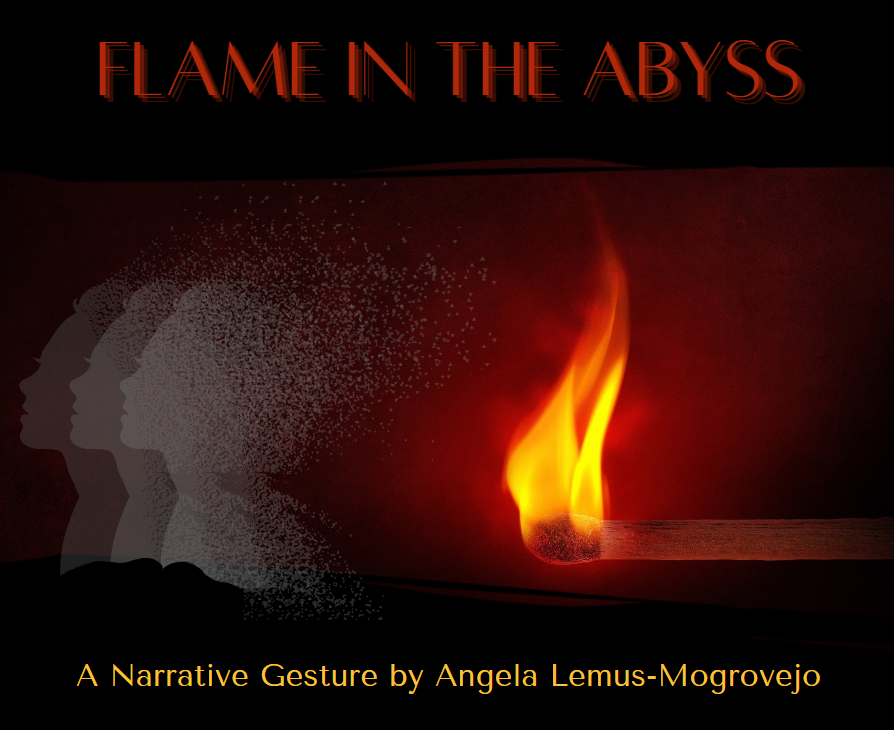Playtesting
Howdy folks!
This post marks the fourth in a series documenting the process of developing my first ever game Flame In The Abyss!
Welcome to Chapter 4 of the #SparkInTheDark Journal: Playtesting!
Coming up with ideas is easy. Actually sharing them for feedback is downright terrifying. Or, at least, it was for me. While I had designed playbooks before, this was different. This wasn't just a few pages of an idea developed off of a format already developed by someone else.
Sharing a full-blown game idea, let alone such a personal one, was a lot scarier than sharing any poem or article I have written in the past 5 years. Takes a lot to share what is in your head, even more so to do so specifically for the purpose of receiving feedback.
However, I feel like half of playtesting is about doing precisely that: getting out of your own head so others can see what you are trying to do or say with what you write. Feedback helps you grow and create something better than you originally thought possible. At least that was the case with my first time playtesting this game.
After running the first iteration of Flame In The Abyss, I found out that I had a lot to be proud of with my game. @thebrandyrose and @media_junkie were delightful to work with and super helpful in giving feedback I needed.
Hearing someone like Mariam say positive things about my game meant a lot to me. Turns out, a lot of the core emotional themes and content with the roles I had designed for my game were pretty solid. In particular, hearing someone feel "attacked" by my writing felt very validating. Having one role encapsulate frustration, one focus on self-sacrificing compassion, and another focus on measured resilience/acceptance struck a chord with people.
However, as with most things, I also discovered what wasn't working in the game. Making things too complicated with rolls weighed the game down needlessly. Having all 4 original themes be possible options for reflection also didn't work. In a way, the first playtest made me erase a fair bit from the original game originally and move memorializing the main loss players reflected on to the final round. Furthermore, Brandy and Mariam both gave me the suggestion of adding a period of decompression that a game like this definitely needs.
Far too often I see heavy games rely only on GMs to manage post-game bleed and that really is unfair. I didn't want to overtax players with such a thing when the game itself could just incorporate a cooldown period. I feel like games could do with being more upfront with such design decisions and respecting how much tackling difficult subjects can work if weight is shared well. A lot of this actually came from thinking over discussions and game design decisions in work by Alex Guerrero and I am grateful to his influence in my game.
Back to playtesting, this time round 2.
If playtest #1 showed me what didn't work about the game, playtest #2 affirmed what worked really well about the game. Having amazing players like @villainvicencio and @pukepeku tell me how deeply affected they were by my game means the world to me, especially when that impact was positive. Even more amazing was discovering how smoothly the game could flow by better emphasizing dialogue between the Frayed and the Myste roles in the game text itself. As delightful as it was to see such banter occur naturally between players in practice, laying it out in the text itself became that much more important. Including a gameplay example became necessary to add at that point.
With playtests finished, I had some things to consider and, more importantly, begin addressing with the later versions of the game text. So, with all that in mind, the next phases of edits began.
Get Flame In The Abyss
Flame In The Abyss
A GM-less journey into memories, grief, and recovery.
| Status | In development |
| Category | Physical game |
| Author | Voice of the Phoenix |
| Tags | GM-Less, grief, Itch Funding, memories, Music, poc-made, recovery, Tabletop role-playing game |
More posts
- PromotionApr 05, 2022
- Editing/Graphic DesignApr 05, 2022
- Outlines/First DraftApr 05, 2022
- ResearchApr 05, 2022
- BeginningsApr 05, 2022

Leave a comment
Log in with itch.io to leave a comment.